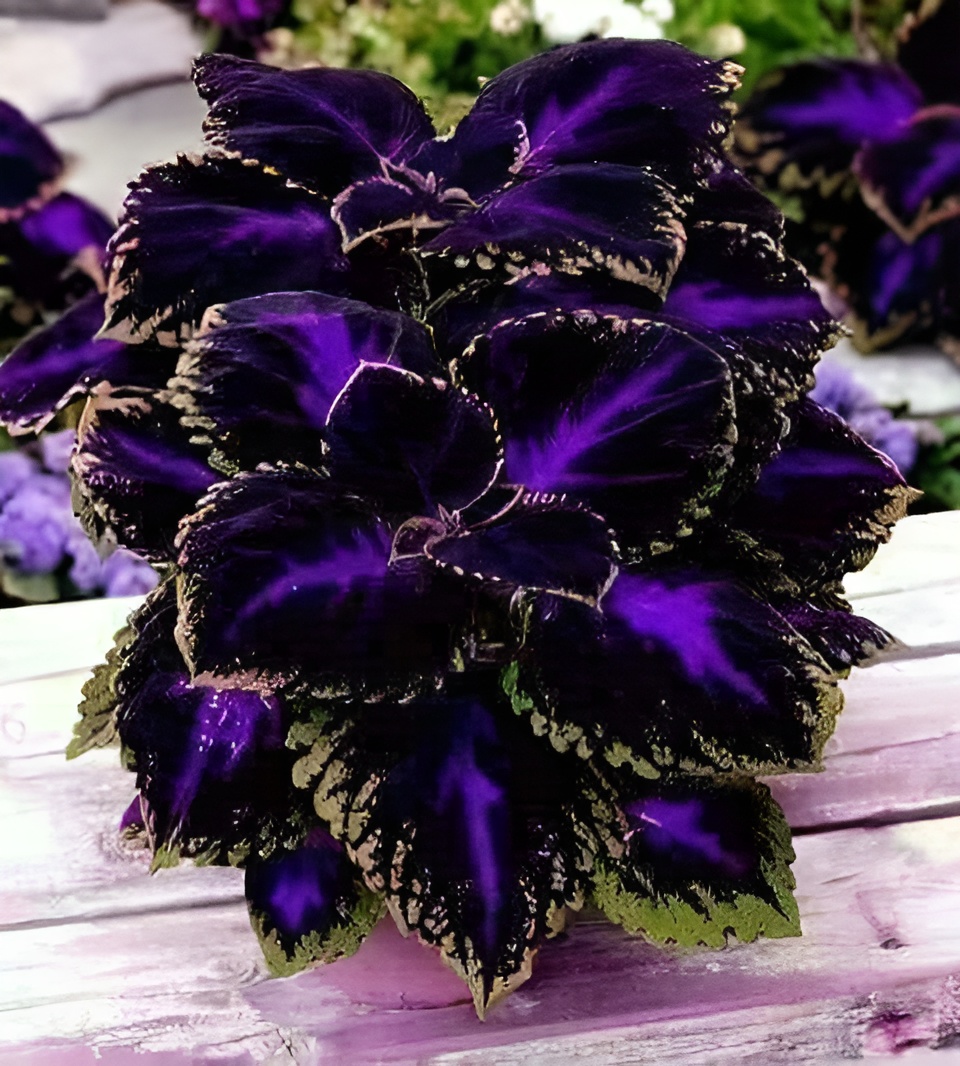
If you are looking for decorative foliage to add a tropical effect to your garden, you will be hard-pressed to find a better choice than the selection of coleus hybrids – Plectranthus odorifera. In fact, some coleus hybrids are more colorful and showy than traditional flowering plants. Although propagation from cuttings is very easy, store-bought potted specimens can be very expensive. If you don’t have a plant stock to choose from, growing coleus from seed may be your best option.
Coleus is a versatile shrub that grows well in shade. Some varieties also thrive in sunny locations. Growing coleus in your garden can provide that extra pop of color you may be missing. In this article, certified master gardener and coleus enthusiast Laura Elsner will show you how to plant, grow, and care for coleus!
The flowers in the garden bloom and fade, but the leaves remain the same. Therefore, it is important that the foliage in the garden is beautiful and interesting. Even when the flowers fade, there is still something that catches our attention. This is where Coleus shines. Their leaves are so complex and colorful that they rival any flower in the garden.
But unlike plants that rely on flowers to make an impact in the garden, coleus shines all season long from its leaves alone. Depending on the Coleus variety, these colorful plants are great companions for shady gardens or sunny locations. There are many different options, making them a filler plant or decorative ground cover for any gardener.


Although technically a tender perennial (Zone 11+), it will be an annual in most areas of the United States. Use it in containers to enliven annual and mixed perennial borders. The color of their leaves is guaranteed to attract attention. Let’s take a look at how to plant, grow and care for coleus so you can incorporate them into your garden or shade garden and provide colorful harmony all season long.
How to spread
The best thing about breeding and cultivating coleus is that they are very easy to propagate. Buying coleus is also easy, and in my experience coleus is becoming more and more popular, making it easier than ever to find specific varieties. Here are some ways to attract coleus to your garden.
Root cuttings

Coleus roots are very simple. Simply cut a new green stem and place it in water to help it take root. It can be stored indefinitely in a bottle of water.
If you want to plant the cuttings in soil, I recommend letting them grow in soil before placing them in water to form huge roots. I find that the larger their roots are, the harder it is for them to get into the ground. I prefer to bury them in the ground immediately.
To do this, take a freshly cut green cutting or a cutting that has been soaked in water long enough to develop small roots and dip it in rooting hormone. This isn’t necessary, but I find it helps the roots grow faster. Then place the cuttings in evenly moist potting soil.
Cover the incision with a plastic wrap or bag and protect it from sunlight for about a week. After a week, remove the cover and place it in the sun. The entire process keeps the soil evenly moist but not waterlogged. If rooting was successful, you will see that the first two sets of leaves have grown.
How do I grow?
I know some people have had no luck with coleus and have found them rotting, cracking and falling apart. I usually don’t have any problems with my equipment because I carefully choose my locations and the conditions in which they are located. If allowed to grow in optimal conditions, they can grow large and lush. That’s all you need.
sunlight

Coleus is traditionally considered a shade plant. It’s true, they do very well in the shade. But there are also many newcomers enjoying the sun. When choosing a coleus, pay attention to whether it is a sun variety or a sun/shade variety.
Full of shadows
Full shade means there is no more than 4 hours of sunlight in the garden. Most plants, including shade plants, do not like complete darkness in the shade. However, some coleus varieties do well in shady conditions. I use coleus in some pots that get so little sun that even the begonias don’t bloom. But somehow the coleus thrives.
irrigation
Coleus is a real water diva and does not tolerate long periods of drought. Water your coleus as soon as you see signs that it needs water. Don’t wait, they quickly pass the point of no return.
The amount of water depends on the amount of sunlight the coleus is in. Coleus grown in full sun require more water than coleus grown in complete shade. When your coleus needs water, its leaves droop and look sad. Once completely soaked, it will come back to life. In hot weather, you can water your coleus in full sun one or more times per day (depending on pot size, soil, and sun intensity). Full shade coleus may only need a weekly soaking.
Climate and temperature
 P
P
Coleus is a tropical plant and therefore prefers tropical temperatures. Tropics are areas where temperatures are consistently above 64°F. This is the climate in which coleus grows. When temperatures drop below 50°F, coleus will stop growing and look limp until warmer weather arrives.
